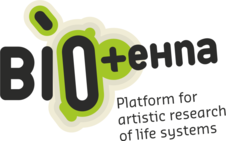BioTehna
Background
The lab was kickstarted by the Kapelica Gallery, which in 2012 received a grant from Switzerland through the Swiss Contribution mechanism. It was established in 2012 in collaboration with the Swiss based Hacketeria (a web platform for 'Open Source Biological Art Projects' and a network of people practising art related DIY biology projects). Dr. Marc R. Dusseiller, a cultural facilitator, artist and nanotechnology scholar was a co-initiator of the whole enterprise and he became its scientific program director and also its first resident.
At first, BioTehna was located at the former premises of Cyberpipe, but it was soon moved to its current location as an integral part of both Kapelica and Rampa Lab programmes.
Basic principles
BioTehna is based upon the principles of do-it-yourself (DIY) and do-it-with-others (DIWO). It tries to perpetuate the demystification of bio-technologies and instigate reflections on how art, science, technology and politics intertwine.
Programme
From the start, BioTehna has been running a mix of workshops, exhibitions and lectures. Among the first ones to lead workshops was BioTehnas coufoudner Marc R. Dusseiller, as well as other Swiss like the electronic artist Ralf Schneider and the artist and scientist on artificial intelligence, Christian Faubel.
Several internationally recognised artists did research or workshops here, among them the English artist Brandon Ballengee, who took youngster into the nature to search for anomalies and mutations there; the Belgian artists Koen Vanmechelen, who problematised some of the concepts related to breeding domestic animals; Richard Pell (USA) and the UK inter-media artist Antony Hall. Some of the Slovene artists hosted by BioTehna were Špela Petrič, Maja Smrekar, Robertina Šebjanič and Saša Spačal.




